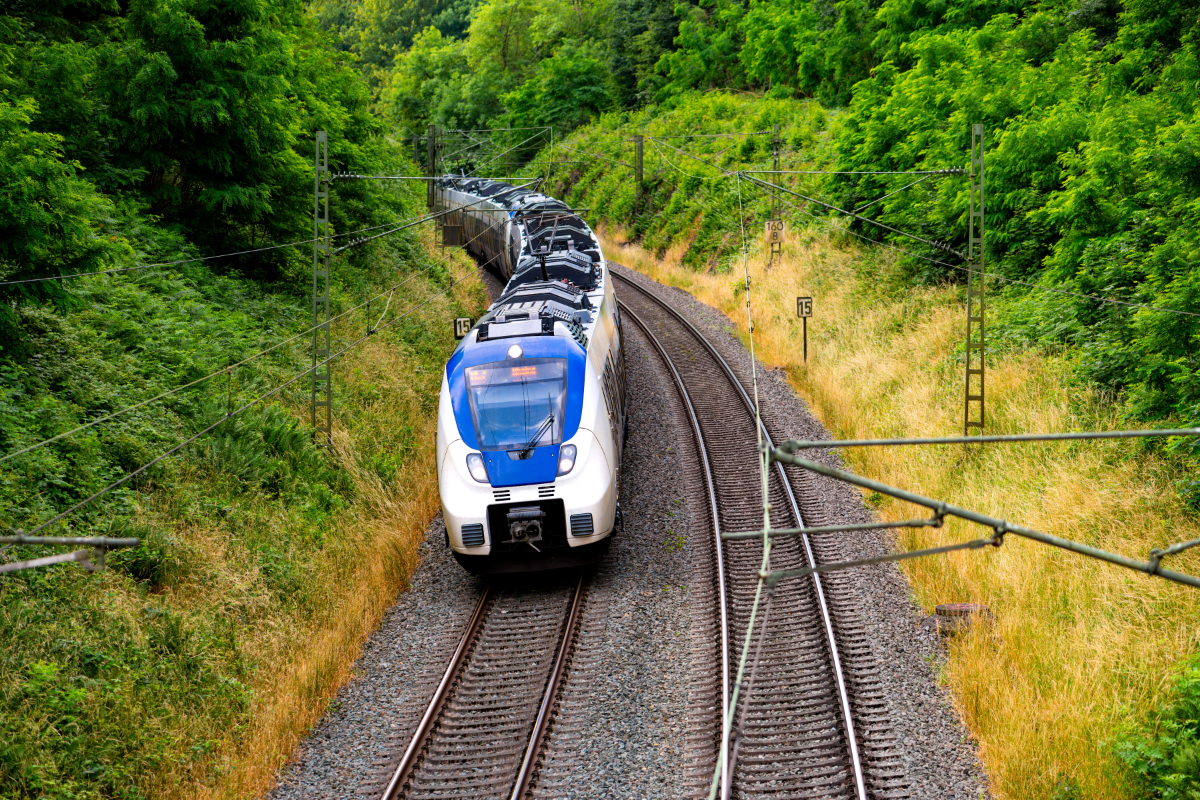January 15, 2025Maintenance and Safety in Overhead Catenary Systems

An overhead catenary system (OCS) is an electrified transit system most commonly used for vehicles such as light railways and streetcars. Created as an alternative to third-rail systems, catenary systems use an apparatus called a pantograph, which collects electricity from an overhead contact wire and delivers this electricity to power the vehicle.
In this post, we will explore the maintenance requirements and safety implications of OCSs and offer some best-practice strategies for transit authorities and managers.
The Importance of Maintenance and Safety
Millions of people across the United States and worldwide rely on public transit systems daily. This means that reliability is essential. Any significant downtime can lead to reputational risks and a loss of revenue for transit management authorities, as well as seriously disrupting the daily routines of travelers.
Regular maintenance is vital to ensuring reliability and operational safety. Neglecting this maintenance can put the system, personnel, and passengers at risk.
Maintenance Best Practices
OCSs are likely to require many adjustments or minor repairs throughout their lifetimes. Therefore, it is vital for transit agencies and authorities to create a robust maintenance plan and schedule, taking into account factors such as weather changes throughout the year, traffic conditions, and data gathered from previous problems or failures.
There are three main types of maintenance required for OCSs:
- Preventive maintenance (e.g., regular inspections) is designed to prevent problems from occurring or to catch small problems before they become big ones.
- Predictive maintenance (e.g., data-driven diagnostics) uses the available data to predict likely faults or problems and take steps to prevent them.
- Corrective maintenance (e.g., addressing failures) involves fixing a problem after it has occurred.
Frequency and Scheduling of Maintenance for an OCS
The American Public Transportation Association does not prescribe standard timelines for inspections and servicing; instead, it leaves that decision to individual agencies. Typical inspection timelines are weekly, monthly, quarterly, or annually, depending on the type of maintenance and various internal and external factors. This also means that authorities have the flexibility to change their maintenance schedules as necessary.
Seasonal variations or environmental factors, such as extreme weather, can affect maintenance needs. For example, extreme temperatures in either direction can necessitate more frequent inspections.
In addition, if a problem has been identified, it is important to pay attention to it even if no immediate fix is necessary. For example, balance weight failures are commonplace and can cause a major issue. One authority changed its inspection timeline from quarterly to monthly to monitor such a fault.
The Key Components to Inspect and Maintain
An OCS consists of numerous different component parts. Here are some of the most important, which must be inspected and maintained regularly.
Contact Wires
Overhead contact wires should be checked for hard spots, wear and tear, and stretching. It is also important to measure the profile of the wire regularly to capture trends in the wear of the wire and project when it will likely need to be replaced.
Insulators
There are many different insulators used in OCSs—porcelain, glass, fiberglass, and molded insulators are just some common examples. Each type requires slightly different maintenance, but all require regular cleaning to ensure no tracking occurs on the insulator.
It is also important to inspect the insulator hardware to ensure it is not loosening and for any electrical arcing. Damage from birds is particularly common; for example, birds may eat the silicone from molded insulators.
Suspension Systems and Fittings
Suspension system hardware must be checked regularly to ensure it is secure. Check that nothing has come loose, is interfering with the passage of the pantograph, or appears at risk of falling off.
Poles and Supports
Poles and supports must be secure and in good working order to ensure the safe operation of the OCS. Check all components carefully, from anchor bolts and nuts to pole attachments, to ensure nothing is loose, detached, or worn out.
Tensioning Systems
Various types of tensioning systems can be used in OCSs. In the United States, the systems most commonly used are either spring tensioners or balance weight tensioners. Spring tensioners have a gauge or dial that shows the spring position dependent on temperature, while balance weights allow you to measure the position of the weight dependent upon temperature.
In both cases, look for wear on the cables, connections, or any of the loose hardware, cabling, or attachments to make sure that everything is in good working order.
Current and Emerging Tools and Technologies in OCS Maintenance
OCS inspection equipment is most commonly mounted to a train or other high-rail equipment and includes scanning equipment that measures the height and stagger of the wire. Some tools can also scan the contact wire to provide a wear pattern, which helps with predictive maintenance.
Artificial intelligence (AI) is developing at an unprecedented speed and is playing a role in virtually all industries. In the coming years, we expect AI-driven tools, such as predictive analytics, will become increasingly important in managing and maintaining public transit systems, including OCSs.
The Role of MAC-IMPulse
Here at MAC-IMPulse, we design and manufacture a complete line of OCS products, and we are proud to be the only U.S.-based manufacturer to do so at the time of writing.
We are committed to innovation and reliability and always strive to stay ahead of the latest technological developments in our field. Our products are made to last and built to meet the most exacting of industry standards for safety, efficacy, and efficiency.
To learn more about our products or the various services we offer to public transit authorities across the United States, check out our extensive catalog of component parts or contact us.
